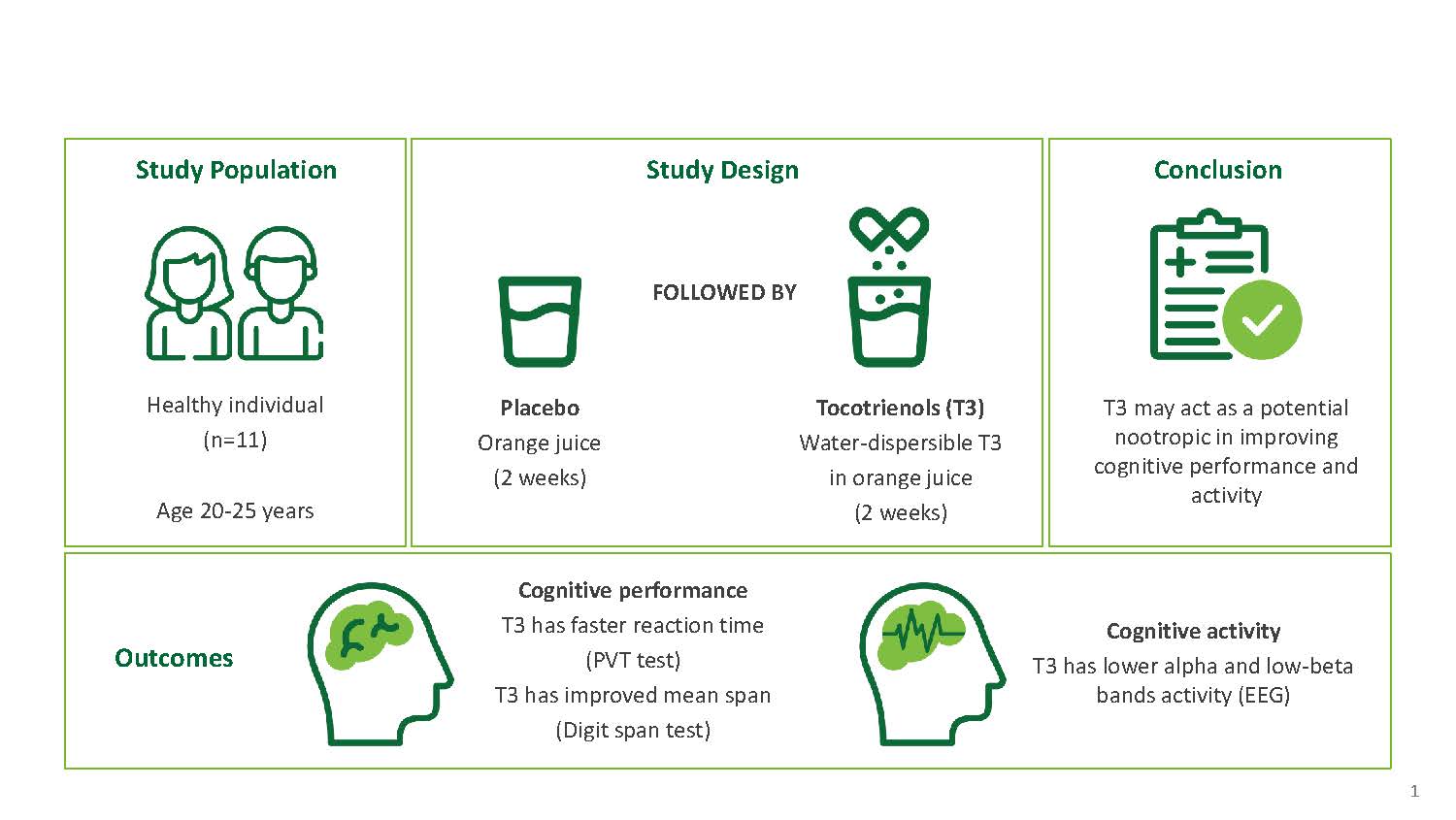Tocotrienol-rich fraction enhances cell proliferation and memory formation in hippocampal HT22 neuronal cells through BDNF/TrkB pathway
Memory formation is influenced by neurogenesis and long-term potentiation (LTP) of neurons in the hippo-campus. In this study, we aimed to elucidate the mechanism of action of tocotrienol-rich fraction (TRF) involved in memory formation. Two cell models were employed, differentiated and undifferentiated HT22 neuronal cells. Our findings demonstrated that treatment with TRF increased cell proliferation of undifferentiated HT22 cells in a time-dependent manner by activating the brain-derived neurotrophic factor/tropomyosin receptor kinase B (BDNF/TrkB) pathway. Elevated levels of cyclin D and E were also observed, indicating an increase in cell cycle progression and proliferation. In differentiated HT22 cells, TRF upregulated expressions of BDNF, phosphory-lation of glutamate receptor 1 and Ca2+/calmodulin-dependent protein kinase II, potentially leading to stronger synaptic strength and contributing to LTP. Taken together, these findings suggest that TRF supplementation may enhance memory formation in HT22 cells through modulation of the BDNF/TrkB pathway.



